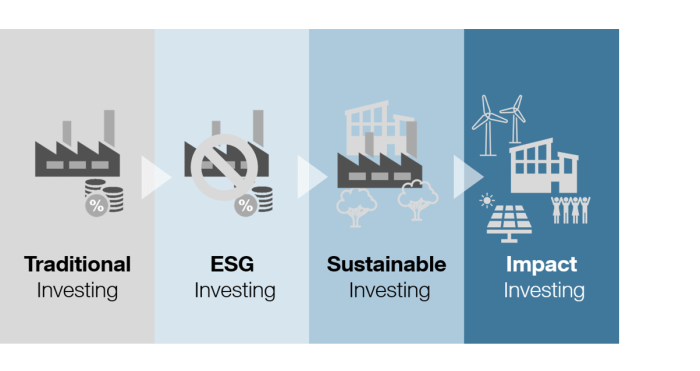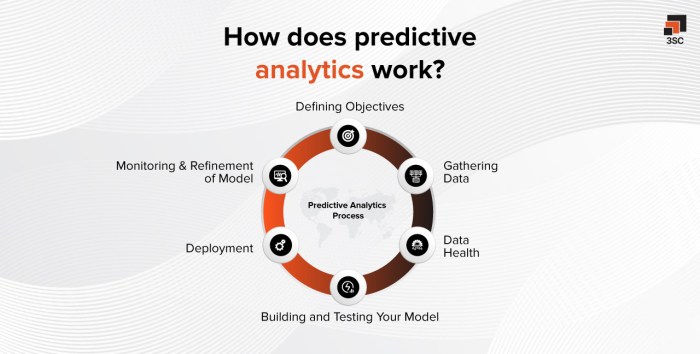How Blockchain Technology is Transforming the Accounting Industry is a topic ripe with potential. The immutable nature of blockchain’s distributed ledger promises to revolutionize accounting, moving beyond traditional methods to offer enhanced security, increased efficiency, and improved data management. This shift is not merely incremental; it represents a fundamental change in how financial records are maintained, audited, and analyzed.
This transformation impacts various aspects of the industry, from automating mundane tasks like reconciliation to providing real-time insights for better decision-making. The implications extend to supply chain finance, regulatory compliance, and the very nature of the auditing profession itself. While challenges remain, the potential benefits of blockchain technology in accounting are undeniable and warrant careful consideration.
Enhanced Security and Transparency in Accounting
Blockchain technology, with its decentralized and immutable ledger system, is revolutionizing the accounting industry by significantly enhancing security and transparency. The inherent characteristics of blockchain offer a robust solution to long-standing challenges related to data integrity, fraud prevention, and auditability. This transformation is driven by the fundamental principles of cryptographic security and distributed consensus, making the manipulation or alteration of data extremely difficult.
The immutable nature of a blockchain ledger is its primary advantage in improving data security. Once a transaction is recorded on the blockchain, it cannot be altered or deleted, creating a permanent and auditable record. This eliminates the risk of data tampering or fraudulent modifications, a significant concern in traditional accounting systems where data is often centralized and susceptible to manipulation. This immutability provides a high level of assurance that the financial data is accurate and reliable.
Blockchain’s Role in Enhancing Transparency and Traceability
Blockchain enhances transparency by providing a shared, verifiable record of all financial transactions. Every participant in the network can access and verify the authenticity of the data, eliminating the need for intermediaries to validate transactions. This increased transparency fosters trust and accountability among all parties involved, streamlining processes and reducing disputes. The traceability afforded by blockchain allows for easy tracking of the entire lifecycle of a transaction, from its origin to its final settlement. This granular level of detail aids in identifying potential discrepancies or fraudulent activities quickly and efficiently. For example, tracking the movement of goods and payments throughout a supply chain becomes significantly easier and more transparent, allowing businesses to pinpoint inefficiencies and potential fraud points.
Preventing Fraud and Manipulation of Accounting Data
Blockchain’s decentralized nature and cryptographic security mechanisms provide a powerful defense against fraud and manipulation. Because data is distributed across multiple nodes, a single point of failure is eliminated, making it virtually impossible for a malicious actor to alter data without detection. The cryptographic hashing algorithm ensures that any change to the data will be immediately detectable, triggering an alert. For instance, in a scenario involving invoices, each invoice’s details are recorded on the blockchain, and any attempt to alter the invoice amount or recipient will be instantly flagged, preventing fraudulent payments. Furthermore, the use of smart contracts can automate certain accounting processes, reducing the risk of human error and intentional manipulation. Imagine a scenario where a smart contract automatically releases payment upon verification of goods received, eliminating the possibility of fraudulent invoice processing.
Impact of Blockchain on Audit Trails and Their Verification
Blockchain significantly simplifies and improves the audit process. The immutable ledger serves as a complete and readily available audit trail, eliminating the need for extensive manual verification. Auditors can easily access and verify the authenticity of all transactions, significantly reducing the time and resources required for audits. The enhanced transparency and traceability offered by blockchain allow auditors to identify and investigate potential discrepancies quickly and efficiently. The reduced reliance on manual processes also minimizes the risk of human error during audits, resulting in more accurate and reliable audit reports. The enhanced security features of blockchain also protect audit data from unauthorized access or modification, ensuring the integrity of the audit process.
Automation and Efficiency in Accounting Operations
Blockchain technology offers significant potential for automating various accounting tasks, leading to increased efficiency and reduced operational costs. Its inherent features of immutability and transparency streamline processes that traditionally rely on manual intervention and prone to human error. This results in faster processing times, reduced workloads, and improved accuracy.
The integration of blockchain into accounting operations promises a paradigm shift from traditional methods. Manual data entry, reconciliation, and audit processes are often time-consuming, error-prone, and require significant resources. Blockchain’s decentralized and automated nature directly addresses these challenges.
Automated Reconciliation
Blockchain’s immutable ledger simplifies reconciliation significantly. Instead of manually comparing data from different sources, a blockchain-based system automatically verifies transactions across multiple parties. For instance, in inter-company transactions, each transaction is recorded on the shared blockchain, instantly providing a single source of truth for all involved parties. This eliminates the need for extensive manual reconciliation, reducing time and effort considerably. The process becomes faster and more reliable, with minimal chance of discrepancies.
Automated Data Entry
Smart contracts, self-executing contracts with the terms of the agreement between buyer and seller being directly written into lines of code, automate data entry. Once a transaction is completed and validated, the relevant data is automatically recorded on the blockchain. This eliminates manual data entry, reducing the risk of human error and freeing up accountants to focus on more strategic tasks. For example, invoice processing can be streamlined. Upon receiving an invoice, the system automatically records the details on the blockchain, triggering payment upon verification and approval.
Efficiency Comparison: Traditional vs. Blockchain
Traditional accounting methods often involve multiple steps, manual data entry, and reconciliation processes that are susceptible to errors. This leads to delays, increased costs, and a higher risk of fraud. In contrast, blockchain-based solutions automate many of these steps, resulting in faster processing times, reduced errors, and improved efficiency. A study by Deloitte estimated that blockchain could reduce reconciliation time by up to 80% in certain industries. This translates to significant cost savings and improved operational efficiency.
Reduced Operational Costs
The automation facilitated by blockchain significantly reduces operational costs. By automating tasks such as reconciliation and data entry, businesses can reduce their reliance on manual labor, lowering personnel costs. Additionally, the reduced error rate minimizes the cost of correcting mistakes and resolving discrepancies. The improved efficiency also leads to faster turnaround times, allowing businesses to process transactions more quickly and improve cash flow. For example, a company using a blockchain-based system for invoice processing might see a reduction in processing time from days to hours, resulting in quicker payments and improved supplier relationships.
Workflow Diagram: Automated Invoice Processing
Imagine a simplified workflow for invoice processing using blockchain. The process starts with the supplier creating and sending an invoice digitally. This invoice is then automatically recorded on a shared blockchain, creating an immutable record. The buyer’s system automatically verifies the invoice against existing purchase orders and other relevant data. Upon verification, a smart contract automatically triggers payment to the supplier, with the payment details also recorded on the blockchain. This entire process is transparent, auditable, and significantly faster than traditional methods, eliminating the need for manual intervention at multiple stages. The entire process is secure and tamper-proof, creating a highly efficient and reliable system.
Improved Data Management and Integrity
Blockchain technology offers significant advantages in managing and ensuring the integrity of accounting data. Its decentralized and immutable nature provides a robust solution to traditional data management challenges, leading to increased trust and efficiency within the accounting process. This section will explore methods for integrating blockchain into existing systems, challenges in data migration, and best practices for maintaining data integrity within a blockchain-based accounting environment.
Integrating Blockchain with Existing Accounting Software
Integrating blockchain with existing accounting software can be achieved through various methods, primarily focusing on APIs and middleware solutions. Many accounting software providers are developing or incorporating blockchain functionalities directly into their platforms. Alternatively, third-party solutions act as intermediaries, connecting the existing system to a blockchain network. This often involves creating custom integrations, tailored to the specific software and blockchain platform being used. For instance, a company might use an API to transfer validated financial transactions from its ERP system to a permissioned blockchain, creating an immutable record. This requires careful planning and consideration of data formatting and security protocols.
Challenges in Data Migration and Integration
Migrating data to a blockchain-based accounting system presents several challenges. Data cleansing and standardization are crucial before migration, as inconsistencies can compromise the integrity of the blockchain. The process can be complex and time-consuming, particularly for large datasets. Furthermore, ensuring compatibility between different systems and protocols requires careful planning and testing. Security concerns during the migration process are paramount, necessitating robust security measures to prevent data breaches or manipulation. Finally, the cost associated with data migration and integration can be significant, requiring careful budget allocation and project management.
Data Management Capabilities Comparison, How Blockchain Technology is Transforming the Accounting Industry
| Feature | Traditional Databases | Blockchain |
|---|---|---|
| Data Integrity | Relies on access controls and database management systems; susceptible to modification or deletion. | Immutable and tamper-proof; changes are recorded and auditable. |
| Security | Vulnerable to hacking, data breaches, and unauthorized access. Security depends on robust system architecture and security measures. | High security through cryptography and decentralized consensus mechanisms. |
| Accessibility | Controlled access through user permissions and authentication. | Accessibility depends on the type of blockchain (public, private, or permissioned). Can range from fully public to highly restricted access. |
| Scalability | Generally scalable, but performance can degrade with very large datasets. | Scalability varies depending on the blockchain implementation; some blockchains face scalability challenges with high transaction volumes. |
Best Practices for Maintaining Data Integrity on a Blockchain-Based Accounting System
Maintaining data integrity on a blockchain-based accounting system requires a multi-faceted approach. This includes rigorous data validation before uploading to the blockchain, employing robust access controls and permissioning mechanisms to limit unauthorized changes, regularly auditing the blockchain for inconsistencies or anomalies, and implementing strong cryptographic measures to protect data from tampering. Furthermore, using multiple nodes and consensus mechanisms enhances data integrity and resilience. Finally, proper documentation and version control of all transactions and data modifications are crucial for maintaining a complete and accurate audit trail.
Real-time Reporting and Analytics
Blockchain’s immutable ledger and distributed nature revolutionize financial reporting, enabling real-time data access and analysis previously unattainable with traditional systems. This fosters faster, more informed decision-making and significantly improves the accuracy of financial forecasting.
The inherent transparency and security of blockchain facilitate immediate updates to financial records. Every transaction is time-stamped and cryptographically secured, eliminating the delays and potential inaccuracies associated with manual reconciliation and batch processing. This allows accountants to access and analyze the most current financial data at any point in time, providing a dynamic view of the organization’s financial health.
Benefits of Real-time Data Access for Improved Decision-Making
Real-time data access empowers accounting professionals to make more timely and informed decisions. Instead of relying on potentially outdated information from monthly or quarterly reports, they can react immediately to changing market conditions, identify emerging risks, and optimize financial strategies. For example, a company experiencing unexpected drops in sales can immediately investigate the cause using real-time data, potentially mitigating losses before they escalate. Similarly, real-time insights into cash flow allow for proactive management of liquidity, preventing potential shortfalls.
Improved Financial Forecasting Accuracy with Real-time Data Analytics
Real-time data analytics significantly enhances the accuracy of financial forecasting. By incorporating current transaction data, predictive models become far more responsive to market fluctuations and internal operational changes. Consider a retail company using blockchain to track sales data. Real-time analysis of sales trends, coupled with inventory levels and other relevant data points, allows for more precise demand forecasting, leading to optimized inventory management and reduced carrying costs. This dynamic approach to forecasting minimizes the risk of overstocking or stockouts, directly impacting profitability.
Enhanced Business Intelligence Dashboards with Real-time Blockchain Data
Imagine a business intelligence dashboard displaying a dynamic representation of key financial metrics. Instead of static figures updated periodically, the dashboard shows live updates reflecting real-time data from the blockchain. A section might display current cash flow, instantly updating with every incoming and outgoing transaction. Another section could visually represent sales performance across different regions, dynamically adjusting as new sales data is recorded. A third section might track key performance indicators (KPIs) such as inventory turnover rate, instantly reflecting changes in inventory levels and sales. This real-time visualization provides a holistic, constantly updating view of the organization’s financial performance, allowing executives and stakeholders to monitor the business’s health continuously and react swiftly to any significant changes. The visual representation uses color-coded graphs and charts, with data points dynamically changing in size and color to represent increases or decreases in key metrics. This interactive dashboard allows users to drill down into specific data points for a more detailed analysis, providing a clear and comprehensive picture of the organization’s financial status at any given moment.
Impact on Auditing and Regulatory Compliance
Blockchain technology’s impact on accounting extends significantly to auditing and regulatory compliance, promising increased efficiency and assurance. The immutable nature of blockchain records and enhanced transparency fundamentally alter the auditing process and how companies meet regulatory demands.
The integration of blockchain into accounting practices presents several significant implications for the auditing profession. Auditors can leverage blockchain’s inherent transparency to streamline their processes and reduce the time spent on manual verification. The decentralized and tamper-proof nature of the technology offers a higher level of assurance regarding the accuracy and integrity of financial data. This shift reduces the risk of fraud and improves the overall reliability of audits.
Changes in Auditing Standards and Regulations
The adoption of blockchain is likely to necessitate changes in auditing standards and regulations. Existing frameworks may need updating to accommodate the unique characteristics of blockchain-based accounting systems. For instance, new audit procedures may be developed to specifically address the verification of smart contracts and the validation of data stored on a distributed ledger. Regulatory bodies will need to adapt their guidelines to ensure that audits of blockchain-based systems meet the same level of rigor and reliability as traditional audits. We can anticipate a gradual evolution of auditing standards, with a focus on developing methodologies that effectively address the verification of data integrity and access control within blockchain environments. This will likely involve collaboration between auditing firms, regulatory bodies, and blockchain technology developers.
Comparision of Auditability
Traditional accounting records, often stored in centralized databases, are susceptible to manipulation and data breaches. Auditing these records requires extensive manual checks and reconciliation processes, which are time-consuming and prone to human error. In contrast, blockchain’s inherent immutability and cryptographic security significantly enhance auditability. Each transaction on a blockchain is cryptographically linked to the previous one, creating an unbroken chain of records. This makes it extremely difficult to alter or delete data without detection. Auditing blockchain-based records can be more efficient and reliable as auditors can verify the integrity of the data through cryptographic verification rather than relying solely on manual checks. For example, a publicly auditable blockchain allows auditors to independently verify the accuracy of financial transactions without needing access to the company’s internal systems.
Blockchain’s Role in Regulatory Compliance
Blockchain technology can significantly assist companies in meeting regulatory compliance requirements. The transparent and auditable nature of blockchain transactions allows for easier monitoring and reporting of compliance-related activities. For example, in industries with stringent regulatory frameworks, such as finance and healthcare, blockchain can streamline the process of tracking and verifying compliance with regulations such as KYC/AML (Know Your Customer/Anti-Money Laundering) and HIPAA (Health Insurance Portability and Accountability Act). The ability to automatically generate audit trails and securely store compliance-related data can significantly reduce the administrative burden and the risk of non-compliance. This enhanced transparency also facilitates easier regulatory scrutiny, reducing the time and resources needed for audits and investigations. Companies can demonstrate compliance more effectively and efficiently by using blockchain to provide verifiable proof of compliance to regulatory authorities. This contributes to a more streamlined and trusted regulatory environment.
Blockchain’s Role in Supply Chain Finance
Blockchain technology is revolutionizing supply chain finance by offering unprecedented levels of transparency, efficiency, and security. Its decentralized and immutable ledger allows for real-time tracking of goods, payments, and contracts, significantly streamlining operations and reducing risks across the entire supply chain. This results in improved trust, reduced costs, and faster payment cycles for all parties involved.
Blockchain enhances transparency and traceability in supply chain finance by providing a shared, immutable record of all transactions and events. Every shipment, payment, and inspection is recorded on the blockchain, creating a complete and auditable history that is accessible to all authorized participants. This eliminates information asymmetry, a major source of friction and mistrust in traditional supply chains. For example, a manufacturer can easily track the origin and movement of raw materials, ensuring compliance with ethical sourcing standards and reducing the risk of counterfeit goods. Similarly, retailers can verify the authenticity of products and trace them back to their source in case of recalls or quality issues.
Enhanced Transparency and Traceability
The shared ledger nature of blockchain allows all authorized parties—from suppliers to manufacturers, distributors, and retailers—to access a single source of truth regarding the movement of goods and associated financial transactions. This transparency significantly reduces the risk of discrepancies and disputes. A company like Walmart, for instance, has already implemented blockchain technology to track the provenance of its food products, providing consumers with greater visibility into the supply chain and improving food safety. This enhanced traceability minimizes the likelihood of fraud and increases accountability throughout the process.
Improved Efficiency of Payment Processing and Reconciliation
Blockchain streamlines payment processing by automating reconciliation and reducing the need for intermediaries. Smart contracts, self-executing contracts with the terms of the agreement directly written into code, can automate payments upon the fulfillment of certain conditions, such as the delivery of goods or the completion of a specific milestone. This eliminates delays associated with manual processing and reconciliation, accelerating payment cycles and improving cash flow for all parties involved. For example, a system could automatically release payment to a supplier once a shipment is verified as received and inspected by the buyer, eliminating the need for manual invoice processing and bank transfers.
Reduced Fraud and Disputes in Supply Chain Financing
The immutable nature of blockchain makes it extremely difficult to alter or tamper with transaction records, significantly reducing the risk of fraud. The transparent and auditable nature of the system allows for quick identification and resolution of discrepancies. If a dispute arises, all parties can access the same verifiable data, facilitating a faster and more efficient resolution process. For example, if a supplier claims non-payment for a delivered shipment, the blockchain record can be used to verify the transaction, resolving the dispute quickly and avoiding costly legal battles.
Implementation of a Blockchain-Based System for Tracking Payments and Invoices
Consider a scenario involving a textile manufacturer, a clothing retailer, and a logistics provider. A blockchain-based system could track the entire process, from the purchase of raw materials to the delivery of finished goods to the retailer. The manufacturer uploads invoices and shipping documents to the blockchain. Upon receiving the goods, the retailer verifies the shipment and triggers a smart contract that automatically releases payment to the manufacturer. The logistics provider also updates the blockchain with delivery information, providing complete visibility into the entire process. All parties can access the shared ledger to monitor the progress of the transaction and resolve any discrepancies quickly and efficiently. This example demonstrates how a shared and transparent ledger, facilitated by blockchain, drastically improves the accuracy, speed, and efficiency of the supply chain.
Challenges and Limitations of Blockchain in Accounting
While blockchain technology offers significant potential for revolutionizing the accounting industry, several challenges and limitations hinder its widespread adoption. These obstacles range from technical hurdles to regulatory uncertainties and the need for specialized expertise. Addressing these issues is crucial for realizing the full benefits of blockchain in accounting.
Scalability Issues in Blockchain Applications
The inherent limitations in the scalability of certain blockchain architectures pose a significant challenge for large-scale accounting applications. Many public blockchains, like Bitcoin, struggle to process a high volume of transactions efficiently, resulting in slow transaction speeds and high fees. This is problematic for accounting firms handling massive datasets and needing real-time processing. For example, a large multinational corporation with thousands of transactions daily might find the processing speed of some blockchains insufficient for its accounting needs. Private or permissioned blockchains, designed for specific applications, offer better scalability but require careful consideration of governance and access control. The need for efficient and scalable blockchain solutions is paramount for widespread adoption in the accounting industry.
Regulatory Uncertainty and Legal Frameworks
The nascent nature of blockchain technology presents significant regulatory uncertainty. The lack of clear, consistent legal frameworks governing the use of blockchain in accounting creates challenges for businesses seeking to comply with existing regulations. Issues surrounding data privacy, security, and liability remain largely unresolved in many jurisdictions. For instance, the legal implications of storing sensitive financial data on a decentralized ledger are still being debated and defined. Clearer regulatory guidelines and international standards are needed to foster trust and encourage the adoption of blockchain solutions in accounting.
Need for Skilled Professionals
The successful implementation and management of blockchain-based accounting systems require a skilled workforce with expertise in both accounting principles and blockchain technology. This includes developers capable of building and maintaining blockchain infrastructure, auditors proficient in verifying blockchain data integrity, and accountants adept at utilizing blockchain-based tools and interpreting the resulting data. A shortage of professionals with this specialized skill set could impede the adoption of blockchain technology within accounting firms. Investing in education and training programs to develop this expertise is vital for bridging this skills gap.
Concluding Remarks: How Blockchain Technology Is Transforming The Accounting Industry

In conclusion, the integration of blockchain technology into the accounting industry is poised to reshape how financial information is managed and interpreted. While hurdles exist regarding scalability and regulatory clarity, the enhanced security, transparency, and efficiency offered by blockchain represent a significant leap forward. The potential for improved data integrity, real-time reporting, and streamlined auditing processes promises a future where accounting is more reliable, secure, and efficient than ever before. The adoption of this technology is not merely a technological upgrade, but a fundamental shift towards a more transparent and trustworthy financial ecosystem.
FAQ Corner
What are the biggest risks associated with implementing blockchain in accounting?
Significant risks include the high initial implementation costs, the need for specialized expertise, potential integration challenges with existing systems, and the evolving regulatory landscape surrounding blockchain technology.
How does blockchain address the issue of data breaches in accounting?
Blockchain’s decentralized and immutable nature makes it extremely difficult for unauthorized individuals to alter or delete financial records, significantly reducing the risk of data breaches and fraud.
Can smaller accounting firms afford to implement blockchain technology?
The initial investment can be substantial, but cloud-based solutions and the potential for long-term cost savings through increased efficiency may make it accessible to firms of various sizes. Collaboration and shared platforms could also reduce individual costs.
What skills are needed to work with blockchain in accounting?
Professionals will need a strong understanding of both accounting principles and blockchain technology. Skills in data analysis, cryptography, and smart contract development will be increasingly valuable.
For descriptions on additional topics like Etsy Seller Accounting and Bookkeeping Tips, please visit the available Etsy Seller Accounting and Bookkeeping Tips.








